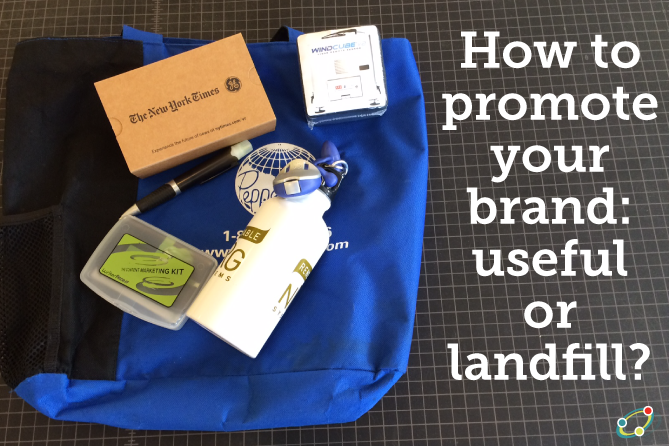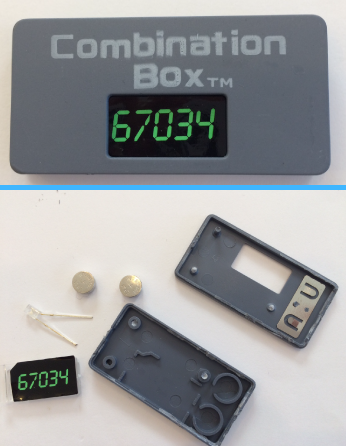How to Use Your Core Values to Inspire, Retain, and Energize Your Team
For the last few decades, but especially so in recent years, people are seeking out more than just an income from their place of employment. More...

Promotional products were a $20 billion dollar industry by 2014, with brands appearing on everything from award plaques to watches. By dollar volume of sales, wearables and writing instruments are the largest categories. Most companies use promotional items at some time, and your strategy is important because promotional items will represent your brand.
Whether you are purchasing promotional products for a product campaign, customer gifts, or employee recognition, your core focus is brand awareness. You will communicate with an audience in a way that should reflect your brand values.
Your name or product name will be on whatever promotional item you purchase and give away. You’ll want the recipients to have the best impression of your brand. So, if you’re a premium product manufacturer you wouldn’t want your audience to associate you with a cheap plastic cup. However, that cup may be just fine for a low-price brand (like a soft drink).
Something rarely asked about promotional items is, “what purpose do they serve the company or brand?” Sure, they put your logo out there in front of people. But to what end? Think about who will get your promotional item, what they are supposed to do with it, and what action they should take.
The easy example is a travel mug. The recipient uses the travel mug (hopefully) and will see your brand logo on a near daily basis. When they need the product or service that you supply, your company should be familiar to them, and they consider your product. But what if that travel mug doesn’t work well, and leaks or dribbles? Now, the person you gave the mug associates your brand with low quality.
Keep increase brand or product awareness
Future purchaser
Contact your company when they need your product or service
 Unfortunately, most promotional items (and almost everything in our society) end up in the landfill.
Unfortunately, most promotional items (and almost everything in our society) end up in the landfill.
Recently I received a direct mail promotion from a local auto dealer. I was probably targeted because I have a car that is five years old, and a list of vehicle information is readily available from list brokers that get that information from motor vehicle registrations. The mailing included a “combination box” secret code, that if it matched my code would enter me into some type of contest – if I visited the dealer.
The problem with this mailing is the promotion piece is something I have to discard. Now this one has two button-cell batteries and an LED. In Vermont, the batteries need to be recycled. This promotion is a lot of landfill – and it didn’t work.
So, what happens to your promotional products? Will they be thrown away immediately, or will they serve a purpose? Will that purpose align with your brand?
There are a lot of great items that are made from recycled material. With printing, we ask about using recycled paper, and the same can be true with some promotional items. There are pencils made from recycled blue jeans or reclaimed wood, pens made from recycled plastic, and many others.
Here a just a few promotional items I received in the last two months that serve a purpose and promote a brand.
Each of these products seem appropriate to the brand. Burt’s Bees was an easy one – just a free sample. The pen is just a reminder of a company that I support. The t-shirt fits the product – not business, but casual. And the coffee cup is from a company that we do business with, puts their logo on my desk.
If you need a promotional item, choose wisely, and think what your audience will use and how it will impact them.
With the Covid-19 pandemic changing everything from in-person events to time in the office, a greater focus has been on how to connect with someone in a meaningful way. Instead of trying to ship stuff to an office that may not be staffed (did you hear about the $180,000 that sat in a cardboard box for ten months?), think about sharing an experience. We once worked with a food company that invited buyers to a master-chef dinner. Offer to make a donation to a charity of their choice. This can be done with a simple email campaign and survey. Museum tickets, park passes, and even movie passes create memories that will outlast a laminated year-at-a-glance calendar.
P.S. A lot of companies and nonprofits think schools are a great audience that should be willing to work with them, from adopting education curriculum to recycling programs. If you want to get your message out through a local school, provide something useful and helpful to them. And, check with them first. Some schools will not accept anything deemed advertising. But schools can always use supplies, such as pencils, pens, notebooks.
This post was originally published February 25, 2016 and updated December 23, 2021.
The Change Conversations blog is where changemakers find inspiration and insights on the power of mission-driven communication to create the change you want to see.
© 2009- to present, Marketing Partners, Inc. Content on the Change Conversations blog is licensed under a Creative Commons Attribution-Noncommercial-NoDerivs 3.0 United States License to share as much as you like. Please attribute to Change Conversations and link to ChangeConversations.
Creative Commons License may not apply to images used within posts and pages on this website. See hover-over or links for attribution associated with each image and licensing information.

For the last few decades, but especially so in recent years, people are seeking out more than just an income from their place of employment. More...

You know nonprofit organizations need websites just as small businesses do, but you may be surprised to learn nonprofit sites can be more complex and...

In today’s rapidly evolving media landscape, understanding where and how your story is told isn’t just strategic—it’s essential. How you communicate...